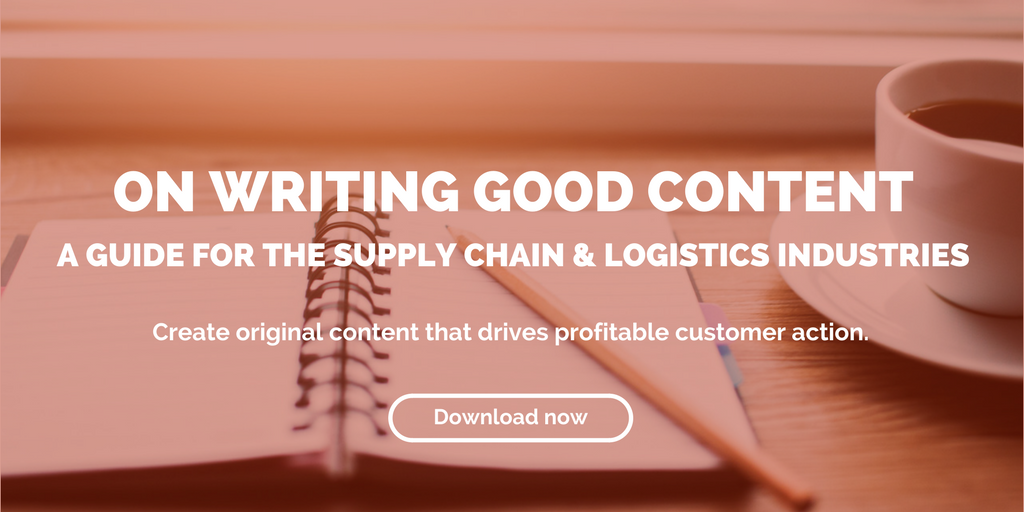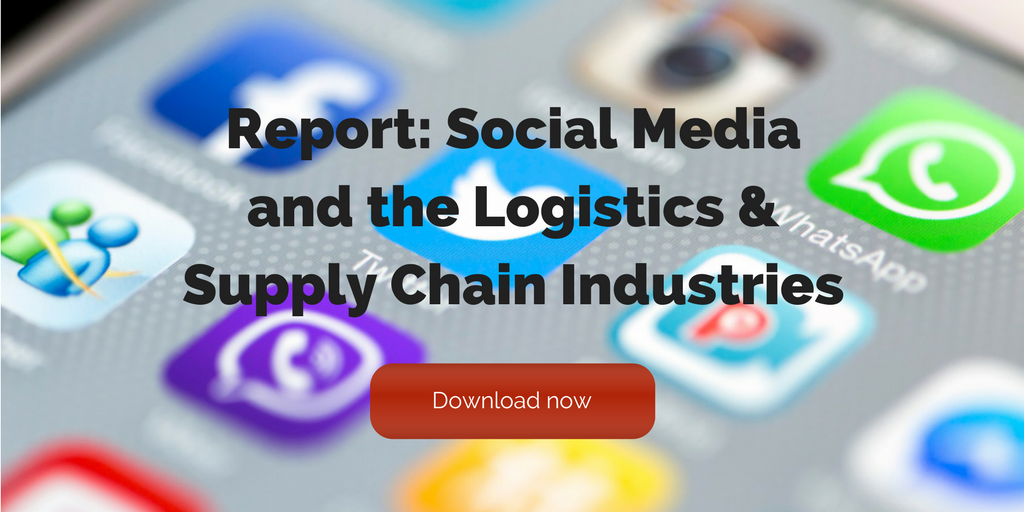
by Fronetics | Mar 27, 2017 | Blog, Content Marketing, Marketing, Social Media, Supply Chain
Here are the major headlines happening in social media news, specially curated for the supply chain, as of March 2017.
It’s not easy keeping pace with the latest happenings in the constantly evolving social media landscape — but it’s a must for your business. To help keep you up to date, here’s our monthly rundown of social media news for the supply chain.
Facebook algorithm ranks reactions higher than likes
Facebook announced earlier this month that it has tweaked its algorithm so that reactions “will affect post ranking slightly more than Likes.” The company cited its finding that reactions are an “even stronger signal” of what content users would like to see, but clarified that all reactions will continue to be weighed equally to one another.
YouTube introduces YouTube TV
After last month’s expansion of mobile live streaming and launch of super chat, the video juggernaut has now introduced YouTube TV, “with about 40 networks onboard to stream their live broadcasts and cable feeds to its subscribers.” The company and participating networks are set to sell ad inventory and share revenue, and the service will be based on subscriptions.
Google launches Meet by Google Hangouts
This one could be big for your business’ internal operations. Meet by Google Hangouts is a new video conferencing application designed for HD video meetings, joining Google’s lineup of business products known as G Suite. The product is “aimed at making it easy to access these calls while on the go, including dial-in numbers for those who are traveling, links you can join with just a click, and integration with Gmail and Calendar for G Suite users.”
Facebook globally launches Messenger Day
The company has launched a new way to share photos and videos “as they happen” in the Messenger app. Be sure to check out this Social Media Examiner post on how to use this new feature to market your business.
Twitter introduces analytics for Twitter Moments
The company has announced that analytics for Moments are now available to all Twitter users, allowing publishing partners and brand advertisers to track their content’s performance and gather insights on post interaction.
LinkedIn adds profile photo filters and editing tools for mobile
LinkedIn has introduced “a quick and easy way to enhance” profile photos with editing and filters right in its mobile app. Users can now “crop and edit the brightness, contrast, saturation, and vignette,” as well as choose from filters to enhance their profile photos.
Related posts:

by Fronetics | Mar 20, 2017 | Blog, Content Marketing, Marketing
If you want to connect with your target audience, make storytelling a part of your content strategy.
If you want content marketing to make a big impact on your business, your audience needs to connect with your content. You need to engage them. You need to grab them emotionally and intellectually. You need to get them thinking.
The best content feels like a great story. That’s because stories do all those things and more.
Content that reads like a great story will facilitate engagement and brand loyalty with your audience, which, in turn, will lead to content marketing success. Here are some tips to incorporate storytelling into your content strategy.
Make your brand tangible to your audience.
Statistics and graphics have their time and place. But real people and real experiences are the best way to connect with your audience on a deeper level. Tell real stories — how a customer benefitted from your product, for example — to get your audience to understand what your company can do for them.
When you engage readers and get them involved in your story, you create long-lasting customer relationships. Storytelling makes them form an emotional bond with your company, which drives brand loyalty.
Greg Hadden, executive creative director of Motive Made Studios, sums up the power of this strategy: “What often gets lost is the fact that good storytelling is potent stuff. It has the power to make people want to believe and to belong, which is the goal of all storytellers. We’re all selling something, be it an idea, an exploration of the human condition, or say, a vacuum cleaner. It’s no mistake perhaps that good stories often create products.”
Humanize your content.
Yes, at the end of the day, we’re all selling something. But your content should not be a sales pitch — it should speak to your audience rather than at them. It should connect with them on a human level.
Your content should represent what you do, what your customers stand to gain, and how you are making life better for your customers and those around you. It should convey genuine enthusiasm for your work.
One of the best ways to tap into this enthusiasm is by thinking about what your company stands for and building content around those principles. Is sustainability at the core of your mission? Does your company pride itself on improving customers’ productivity and efficiency? These are messages that can humanize your brand — and that your audience can believe in and relate to.
Whole Foods is an exceptional example of a company using content to connect with its audience and establish itself as a lifestyle brand focused on healthy eating and living. It curates content, for example, about how to save money while still eating healthily. While not directly related to its products, this kind of content understands the needs of the target audience interested in Whole Foods’ products. Further, its content conveys the company’s passion for earth-conscious living and uses proactive language to allow readers to feel like they have an active role in that mission.
Successful content begins with connection. The more you can walk the line between telling a story and promoting your brand, the more connections you’ll make. Start by being yourself and talking about what drives you in your content. The stories you share will be authentic and tangible to the target consumer who is interested in what you have to offer.
Related posts:


by Fronetics | Mar 15, 2017 | Blog, Content Marketing, Logistics, Marketing, Strategy, Supply Chain
A supply chain company published one more blog post per week and gained a new customer in one month.
Companies in the logistics and supply chain industries have been hesitant to adopt digital and content marketing because they are unsure about the benefits. We hear it all the time: Who is going to read a blog about my business? How is that going to get me more customers?
Something else we see all the time? How content marketing works for supply chain companies.
You see, the B2B buying process has changed. The vast majority of buyers now go online to research products and services they want to purchase. The proof is in the numbers:
- 94% of buyers reported using online research at some point in the purchasing process.
- 62% of B2B buyers say that a web search was one of the first three resources they use to learn about a solution.
- 95% of B2B buyers are willing to consider vendor-related content as trustworthy.
- 67% more leads were generated by companies with an active blog last year.
- 47% of B2B buyers consume 3-5 pieces of content prior to engaging with a salesperson.
- 51% of B2B buyers rely more on content to research and make B2B purchasing decisions than they did a year ago.
I could go on and on.
Blogging frequency matters
Here’s the rub: Blogging every once and awhile isn’t going to get you results. You need to publish quality content on a consistent basis to attract prospects to your site.
The reality is that the more often you blog, the more traffic and leads you’ll get. Search engines consider posting frequency in their rankings. What’s more, every time you post, you create a new opportunity to be found, to be shared, and to be linked to by other sites.
That being said, you don’t need to post five times a week to be successful. In fact, small steps can go a long way.
Try one more post per week
We often encourage our clients to increase their blogging cadence by just one more post per week. Though some are skeptical of the impact this will have on their traffic and lead-generation efforts, they inevitably find that such a small step can make a big difference.
Take one client of ours, for example.
We suggested moving from publishing one post to two posts per week. The client was unsure this would have any impact, especially for a company in the supply chain industry. But the immediate results spoke for themselves.
After just one month, the client saw the following successes:
- Web traffic increased by 23%.
- Social reach increased by 252%.
- Sales leads doubled. 90% of those leads were sourced from organic search.
- A lead converted to a customer.
All of these results were directly related to the increased blog frequency.
Test it out
The trouble in publishing more posts is balancing resources so that you’re publishing frequently but maintaining value and quality within your content. We’re big advocates of testing to find your personal sweet spot for the amount of posts your organization is able to publish to maximize traffic and leads.
Try publishing one more post per week for one month. Track your KPIs, calculate ROI, and assess whether increasing the blogging frequency is right for your business. You may be surprised at the results.
Related posts:

by Fronetics | Mar 14, 2017 | Blog, Content Marketing, Marketing, Social Media, Strategy
Keep these best practices in mind when determining how often to post to social media.
Creating valuable, relevant content in a strategic and consistent manner creates demand for your products and services and drives profitable customer action. But as BuzzFeed’s Jonathan Perelman said, “Content is king, but distribution is queen and she wears the pants.”
It’s not enough to just create interesting and pertinent content; you have to put it out there to reach your target audience. Moreover, the content needs to be delivered consistently over time, at the right time, and in the right place.
With social media networks changing daily, it’s hard to keep up with where to distribute content, much less how often. Countless studies have attempted to solve the social-media-frequency equation. And while audiences vary across industries, best practices give us some general guidelines.
Here’s our assessment of social media posting frequency.
Twitter: 40 per day*
*Big caveat here: 40 tweets per day is what we’ve found works for us and most of our clients. Let me explain.
Socialbakers suggests that posting to Twitter three times per day is the ideal frequency for brands. Buffer posts to Twitter 14 times per day. Fronetics happens to tweet 40 times per day. So last spring, after seeing the Socialbakers and Buffer stats, we conducted a month-long experiment to see how dropping our posting frequency closer to their benchmarks would affect our engagement.
As we’ve written about before, it wasn’t pretty. We confirmed that our engagement, web traffic, lead generation, and other key performance indicators are at optimal levels when we tweet 40 times per day.
Your company, or your marketing partner, should conduct due diligence and determine what the right frequency is for your business. Yes, you may realize a significant decline in engagement in ROI during your experiment. On the other hand, you may realize an increase in engagement and ROI — captured with lower output in terms of time and resources.
Facebook: 1 per day
Most companies find that posting 1 time per day is their sweet spot for most social media networks. Facebook is no exception: The network’s algorithm values quality over quantity, so the more engaged your followers are with your content, the more likely they are to see your posts. This also means that posting content that does not facilitate engagement can actually decrease the likelihood that followers will see your posts.
One sure way to encourage disengagement is by overwhelming your audience. We all have that friend or company we follow that posts too much — don’t be like that person.
Remember that the lifespan of a Facebook post (about 5 hours) is significantly longer than that of a tweet. So you don’t need to provide a constant stream of content to get your audience’s attention. Your focus should be distributing the most relevant, interesting content you can, at a time when most of your audience will be on Facebook.
Instagram: 1-2 per day
There’s an unwritten rule among Instagramers that a user shouldn’t post more than once per day. We generally agree for the same reason we don’t think brands should post more than once a day to Facebook: Don’t overwhelm your audience because the lifespan of your posts is pretty long. In fact, a Union Metrics study found that many Instagram posts continue to receive engagement for days — even weeks — after posting.
Most brands end up posting 11-20 posts per month. If you focus on compelling images with strategic messages, that’s probably a good benchmark to stick with. It’s important to note, however, that another Union Metrics study suggests posting consistency is more important than frequency. Again, taking the time to test the Instagram posting frequency that works best for your business is a worthwhile endeavor.
LinkedIn: 1 per day
A more formal and technical social media network, consider LinkedIn a platform for business-related content. Don’t post here more than once per day — and consider posting only during the workweek. Many professionals don’t check LinkedIn on the weekends, and your content could easily be missed.
Buffer reports that posting 20 times per month (once a workday) allows companies to reach 60% of their audience. To provide the most value for your LinkedIn followers, content should be less promotional and more heavily focused on industry-wide trends and insights.
At the end of the day, optimal posting frequency for your company rests heavily on the audience you want to reach. Experimenting with different social media networks and posting frequencies will give you greater insight into your ideal distribution approach. With these best practices as a guide, let your own analysis be your guide. Maintaining a dynamic and fluid posting strategy will ensure that your social efforts drive followers to action, rather than drive them away.
Related posts:

by Fronetics | Mar 13, 2017 | Blog, Content Marketing, Marketing, Social Media, Supply Chain
Use these two strategies to help your blog generate leads faster.
Creating quality content for your blog that educates and engages consumers takes significant investment and resources. But, unfortunately, blog posts usually don’t deliver the immediate ROI that many companies are looking for.
A blog is an excellent lead-generation tool. But, as I’ve written about before, it takes time to generate leads and sales.
Like a fine wine, blog posts become more valuable with age.
Older content — likely, with more shares, likes, and referrals from other webpages — hold more credibility with search engines. The more credible the blog post, the higher it will rank in search engine results. What does this mean for you? The more time your blog has to circulate the internet, the more opportunity people have to read it, the higher it will appear in search queries. It’s that simple.
But your boss wants to see results in the form of leads and sales now. How can you bridge the gap between giving your blog the time it needs to become credible and boosting your lead-generating efforts for this sales cycle?
If you want to accelerate lead generation, it’s going to take a greater investment. But if you’re willing to commit more time and resources, here are two things you can do to see results sooner than later.
Two things you can do now to get leads faster
1. Publish more frequently.
Search engines value posting frequency because it shows that your blog is a consistent source of content. The question is, how much can your organization publish without experiencing a decline in quality and relevancy? Those are other factors influencing search engine rankings, not to mention readership, leads, and conversions.
But “more frequently” doesn’t have to mean going from 0 to 60. Even publishing once more per week can make a dramatic impact. This story, for example, shows how publishing one more post per week helped a client’s web traffic increase by 23%, sales leads double, and a prospect convert to a customer — and that was just in just one month.
A HubSpot study showed a tipping point around 400 total blog posts — blogs with 401+ total posts generated twice as much traffic as those that had published 301-400 posts. And more specifically, B2B companies with 401+ total blog posts generated nearly 3X as many leads as those with 0-200 posts. The faster you can reach that 400 mark, the quicker your results.
2. Don’t neglect your old content.
It’s important to keep in mind that the majority of your web traffic (aka potential leads) will first encounter your older content. Looking at Fronetics’ most-viewed posts last month, for example, 80% were published at least six months prior. In fact, 50% were more than a year old.
What does that mean? For one, you should keep tending to your already published content, particularly those posts that prove to be a consistent source of traffic. Update information; add links to new related posts or other relevant resources; and seek opportunities to insert or update calls-to-action to current offers and campaigns. Making sure those older, consistently popular posts continue to serve and engage your readers will increase your chances of conversion.
Secondly, it’s crucial that you look beyond how the posts you published recently perform. Something that doesn’t get a lot of views in the first week may be a huge traffic source and lead converter in a little time. Many content management systems, like HubSpot, can generate attribution reports, which tell you which web pages users most often visit before converting to a lead. Compare these pages with your high-traffic pages that don’t make the list to see how you can create more opportunities for lead conversion on the pages earning the most traffic.
If you invest the time and resources to run a blog, you owe it to yourself to see it through to success. Doing these two small things can get you there faster.
Related posts:

by Fronetics | Mar 7, 2017 | Blog, Logistics, Marketing, Social Media, Supply Chain
Social listening can help your business gain valuable insight about prospects, monitor your competitors, turn around negative conversations about your company, and earn social influencers.
Every day, conversations are taking place about your company, your products and services, your industry, and your competitors. These conversations are not just happening over the water cooler: They are happening on social media.
These conversations not only provide invaluable (and often strategic) information, they also serve to shape and define your company and your brand. With the advent of social media, the reality is that is the customer who drives your company’s image and brand message. If your company isn’t on social media, you miss out.
Social listening — 4 key benefits
Social listening, or social monitoring, is the process of monitoring social media to identify and assess what is being said about a company, individual, brand, product, or service. Through social listening, your company can gain market intelligence. You learn how your company, products, and services are being perceived. Knowing this information in real time is invaluable.
Here are 4 ways social listening can benefit your business and help you grow revenue.
1. Gain valuable prospect insight
Social media can be an incredible tool for getting to know your leads. Think about it: Social networks possess massive amounts of self-qualified, real-time data about billions of people. Consider the astonishing number of monthly active users on each platform:
- Facebook: 1.86 billion
- LinkedIn: 467 million
- Twitter: 319 million
- Instagram: 600 million
That’s a lot of potential customers. Now think about all of the details users provide on their social profiles and the kinds of things they post about: their preferences, where they live and work, and how they feel about different companies and brands, to name a few. Social listening lets you mine this information to learn about your prospects and customers.
2. Stay ahead of the competition
Social listening allows you to access valuable information about your competitors. You can see what customers are saying about your industry peers and make strategic decisions based on this knowledge. Using programs like Hootsuite, you can monitor keywords and your competitors’ brands and products. Based on your findings, you can make critical changes or create content to increase your brand awareness.
3. Create tone awareness
You know customers are talking about your company, but is the tone a positive one? And if it’s not, how are you responding? Social listening gives you the opportunity to take a negative customer-service situation and not only correct the problem, but improve the customer relationship. By having a personal response to negative comments on social media, your company shows a genuine concern for its customers and an investment in customer satisfaction.
4. Earn key influencers
People value the reviews of their peers over claims from a corporation. In fact, 93% of millennials have made a purchase based on a recommendation from friends and family, and 89% of millennials trust these recommendations more than they do the claims of the brand itself. Hence the rise of the influencer marketing.
Social media influencers are people that encourage others to work with your business through social networking. According to Sprout Social, “Social media managers prize their social media influencers because they drive engagement, discussions and word of mouth for your brand.” Real people talking about their experiences with your products and services helps foster trust in new customers.
Using social intelligence
To reap the benefits of social listening, including increasing your revenue, you need to use the information and intelligence gathered. For example, if you learn via social media that your customers are experiencing issues with a specific product, take steps to determine what the issues are, and then make the appropriate changes.
The Aberdeen Group offers additional examples of how businesses have and can use social listening: “Companies can use the voice of the customer to make critical adjustments and find issues related to inventory allocation, order management, returns management, cost, overall service satisfaction and beyond.”
The opportunities the supply chain and logistics industries can realize through social listening are great. Not participating in social listening results in missed opportunities.
Related posts:









